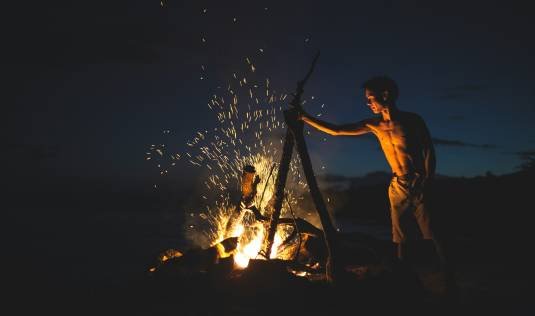
Wildfires are a serious threat that can damage lives, property, and natural ecosystems. It is therefore important to be aware of safety tips for preventing wildfires. This guide will not only provide you with information but also connect you emotionally so that you can protect yourself, your family, and our precious forests. With a deep understanding of wildfire prevention and safety measures, you can help reduce the risks of wildfires.
Stay informed with Social Media Safety Tips and share responsibly. Visit our blog for more. Stay safe!
What Are Forest Fires and Why Should We Care?
Wildfires are caused by large, uncontrolled fires that occur in forested areas. These fires can destroy the landscape. Destroying the habitats of wild animals is dangerous to human life According to news reports Human activities are responsible for 85% of wildfires, highlighting the importance of preventive measures. Protecting our forests is not only about safety—it’s about preserving the environment for future generations.
Essential Forest Fire Safety Tips for Prevention
1. Understand the Importance of Fire Danger Levels

Forest fire danger levels indicate the likelihood of a wildfire occurring, before leaving Find out how dangerous fires in your area are. Stay away from high-risk activities such as camping, burning trash, and operating sparking machinery. You can plan safer by checking local fire alerts and weather updates.
Learn more about Fire Safety Tips to Protect What Matters Most!
2. Create and Maintain Defensible Space Around Your Property
Creating a protective zone is one of the best strategies for keeping your home safe from wildfires. Reduce fuel use to 100 feet and eliminate combustibles within a 30-foot radius around your property. When landscaping, select branches for trimming. Maintain the lawn and fire-resistant native plants In addition to being a safe area for firefighters, This space also greatly reduces the severity of fires approaching your home.
3. Practice Campfire Safety: Prevent Sparks from Becoming Flames

Campfires are one of the leading causes of wildfires. To reduce the risk Create a fire pit in a designated fire ring or pit away from flammable materials such as dead leaves and overhanging branches. Use a small wooden stick. instead of large logs And keep a bucket of water or a fire extinguisher nearby. Once you’re done, douse the campfire with water, stir the ashes, and ensure it’s completely cold to the touch before leaving. Learn more about Fire Pit Safety Tips.
Additionally, educate yourself and others about local regulations concerning open flames. Compliance with these laws will help protect the safety of the entire forest ecosystem.
4. Be Cautious with Outdoor Equipment and Vehicles
Outdoor vehicles and equipment can accidentally start wildfires due to hot exhaust systems or sparks. Make sure all vehicles and equipment are well maintained and equipped with spark arrestors. Avoid parking on dry grass. And carry necessary fire prevention equipment such as a shovel and a bucket in your vehicle. Accidents that could lead to forest fires can be avoided with constant vigilance.
When using welding tools or machinery such as a power saw, store these tools in a clean place. Away from flammable things. Avoid these activities on Red Flag Day and other high-risk weather days.
Forest Fire Safety Tips During a Wildfire
5. Stay Informed: Monitoring Alerts and Warnings

during wildfire season It’s important to keep up to date with weather conditions and red flag warnings. These alerts help you understand your level of risk and prepare accordingly. Subscribe to the local emergency alert system and download the app that provides real-time updates on wildfires in your area. Reliable information can make all the difference when time is of the essence.
In addition to official alerts, monitor social media updates from credible sources for up-to-date wildfire information. This can help you act quickly and make informed decisions.
6. Evacuate Safely: Have a Wildfire Evacuation Plan
Careful evacuation planning can save lives. Identify several evacuation routes and practice them with your family. Prepare an emergency bag with essentials such as food, water, medicine, and important documents. In the event of an evacuation order Move immediately and avoid unnecessary risks. Learn more about creating a strong evacuation plan here. Make sure that all family members including pets Part of the evacuation plan Assign a role to each family member to ensure smooth coordination during emergencies.
7. Use Space Heaters and Other Appliances Responsibly

If you live near a forested area Responsible use of electrical appliances such as space heaters can reduce the risk of fire. Keep the heater away from flammable materials. And make sure it has an automatic shutdown feature. Proper equipment management can prevent fires from spreading inside and spreading to the surrounding forest. Check out our Space Heater Safety Tips.
Post-Wildfire Safety Tips: Recovery and Awareness
8. Inspect Your Property for Hidden Dangers

After the forest fire Carefully inspect your property for potential hazards, such as burning debris. Unstable construction and broken electrical wires. Always wear safety equipment when cleaning and seek professional help in removing hazardous materials. Focusing on safety is essential in the post-wildfire recovery process.
Additionally, report any remaining fire danger to local authorities to help protect the community. Fireworks and further damage can be prevented by taking precautions and taking timely action.
9. Replant Trees and Vegetation to Support Recovery
When it is safe to do so Take part in reforestation initiatives to help the ecosystem return to normal. Soil erosion can be avoided and ecosystems can be restored by planting native plants. In addition to saving the world Community reforestation also unites individuals with a shared goal of restoring the natural world.
Rebuilding the natural environment after a fire is a long-term commitment, but every small step contributes to ecological balance and resilience.
Frequently Asked Questions About Forest Fire Safety
What Should I Do If I Witness a Fire?
Call 911 immediately and provide details about the location and size of the fire. Do not attempt to extinguish large fires yourself; instead, focus on ensuring your safety and alerting authorities.
How Can I Help Prevent Wildfires in My Community?
Volunteer for local fire prevention programs, educate others about fire safety and practice responsible behavior in fire-prone areas. Every small action contributes to a larger impact.
External Resources for Forest Fire Safety
- National Wildfire Coordinating Group (NWCG).
- American Red Cross Wildfire Preparedness Guide.
By incorporating these forest fire safety tips into your daily life, you can play a vital role in preventing wildfires and ensuring the safety of your community. Remember, protecting our forests is a shared responsibility; together, we can create a safer environment for future generations.




